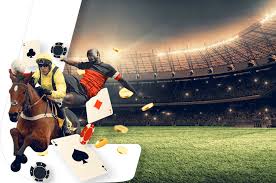
Best Poker Strategies for Bluffing 2025
Bluffing in poker is an art form that combines psychology, strategy, and a little bit of luck. As we approach 2025, the landscape of poker continues to evolve, with players becoming increasingly savvy about the intricacies of the game. Understanding how to successfully bluff your opponents can be the difference between victory and defeat. In this article, we will delve into the best poker strategies for bluffing in 2025. For those interested in deepening their understanding and skills, consider checking out Best poker strategies for bluffing 2025 total casino pl for additional resources.
1. Understand Your Opponents
The foundation of effective bluffing lies in your understanding of your opponents. Each player has a unique play style and tendencies that you can exploit. Pay attention to how your opponents react under pressure, the frequency of their calls, and their general playing patterns. Are they tight players who only bet big with strong hands, or are they loose and aggressive, willing to risk chips to pressure others? By developing a solid read on your opponents, you can determine when it’s the right moment to bluff.
2. Master Position
Your position at the table plays a crucial role in your ability to effectively bluff. Players who act later in a round benefit from more information about their opponents’ actions. Bluffing from a late position allows you to gauge the strength of other players’ hands before making your move. If you notice weakness displayed through small bets or checks, this might be your cue to step in with a well-timed bluff.
3. Choose the Right Hand
Not all hands are created equal when it comes to bluffing. Certain types of hands create a more convincing case for a bluff. For example, a hand with potential for a straight or flush can make your bluff seem more credible. You want your opponents to believe you are drawing to a strong hand. Conversely, bluffing with a weak hand that offers no potential to improve may raise red flags. As you plan your bluffs, consider the story your hand tells to your opponents.
4. Timing is Everything
Timing your bluffs requires a delicate balance of instinct and observation. Choose moments that feel natural to make your bluff. If the board texture suggests your opponent could be holding a strong hand, that’s perhaps not the best time to attempt a bluff. On the other hand, if the community cards have come down in a way that could logically support a stronger hand, your bluff is much more likely to succeed. Developing a sense of timing will come with experience, so logging hands and reviewing your gameplay can help you fine-tune this critical aspect.
5. Be Selective and Mindful of Your Image
Your table image significantly influences how likely your bluffs are to succeed. If you have established yourself as a tight player, a well-timed bluff can be the perfect way to capitalize on that image. However, if you’ve been caught bluffing too often, your credibility may be shot, and opponents will be less inclined to fold. Be selective about when to bluff, ensuring that your actions align with the image you’ve cultivated at the table.

6. Utilize Live Tells
One of the advantages of live poker is the ability to observe your opponents closely. Look for physical tells such as fidgetiness, lingering eye contact, or sudden changes in demeanor that might indicate uncertainty. While these tells are not foolproof, they can offer valuable insights into whether your bluff has a chance of succeeding. Always remember, however, that tells can be misread, so use them in conjunction with the overall context of the game.
7. Practice Makes Perfect
Like any skill, bluffing in poker improves with practice. Take time to engage in practice sessions where you focus specifically on your bluffing techniques. Online poker platforms may provide an excellent opportunity to experiment with different strategies without the pressure of a live setting. Try various approaches to bluffing across different table dynamics and notice which methods yield the best results.
8. Employ The Logic of Semi-Bluffing
Semi-bluffing, or betting with a hand that is currently not the best but has the potential to improve, is a strategic way to incorporate bluffing into your game. When you semi-bluff, you are not entirely relying on your opponents to fold; instead, you still have a chance of hitting a strong hand on the turn or river. This tactic can apply pressure while also providing an opportunity to win through the strength of your eventual hand.
9. Know When to Fold
A significant aspect of poker is understanding the fine line between confident bluffing and reckless overcommitment. Recognizing when your bluff is no longer viable and being able to fold your hand, even when emotionally attached, is crucial for long-term success. Every good poker player knows that sometimes the best move is to walk away.
10. Review Your Hand Histories
After your poker sessions, take the time to analyze your hands. Review the bluffs you attempted: which ones succeeded and which ones failed? Look for patterns and learn from your mistakes. Understanding the dynamics of each hand will help solidify your strategies for future games. Keeping a journal or using poker software can significantly aid in your review process.
Conclusion
As you hone your poker skills heading into 2025, mastering the art of bluffing will set you apart from the competition. Recognizing when to bluff, understanding your opponents, and utilizing the right strategies will enhance your gameplay significantly. Remember, bluffing is most effective when it is part of a broader strategy, so integrate it thoughtfully into your overall approach. With practice and patience, you’ll become a more formidable player, capable of outsmarting your competition at every turn.
